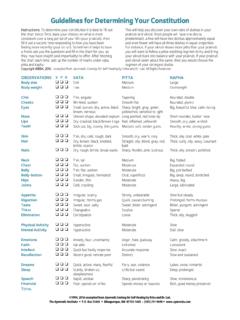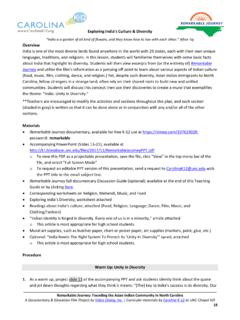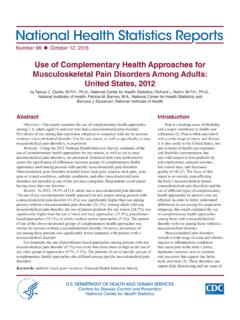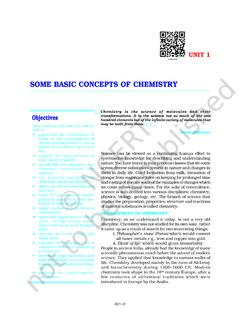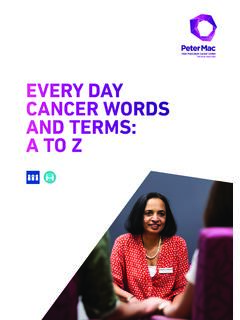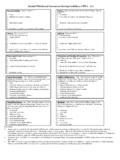Transcription of Astanga Hridaya Sutra Sthan - Planet Ayurveda
1 Astanga Hridaya Sutra Sthan Vagbhat Astanga Hridaya Sutrasthan Page No. 2 Astanga Hridaya Sutrasthan Chapter 1: Ayushkameeya Adhyaya Desire for long life 1. Salutations Salutation to The Unique and Rare Physician, who has destroyed, without any residue all the diseases like Raga (lust, anger, greed, arrogance, jealousy, selfishness, ego), which are constantly associated with the body, which is spread all over the body, giving rise to disease, delusion and restlessness. This salutation is done to Lord Dhanwantari. 2. Purpose of life: Essential quality to learn Ayurveda : : : yu: k m yam nena dharm rtha sukhas dhanam | yurvedopade e u vidheya: param dara: || To achieve the purpose of life, that is 1. Dharma following the path of righteousness 2.
2 Artha earning money in a legal way 3. Kama fulfilling our desire 4. Moksha achieving Salvation, To achieve this purpose of life, one should concentrate on having a long life. To learn the science of Ayurveda , which explains how to achieve this purpose, obedience (Vidheya) is the most important quality. 3. Origin of Ayurveda Lord Brahma, remembering Ayurveda , taught it to Prajapathi, he in turn taught it to Ashwini Kumaras (twins), they taught it to Sahasraksa (Lord Indra), he taught it to Atri s son (Atreya Punarvasu) and other sages, they taught it to Agnivesa and others and they (Agnivesha and other disciples ) composed treatises, each one separately. Astanga Hridaya Sutrasthan Page No. 3 Astanga Hridaya Sutrasthan 4 Funda of Ashtanga Hrudayam: From those Ayurvedic text books, which are too elaborate and hence very difficult to study, only the essence is collected and presented in Ashtanga Hridaya , which is neither too short nor too elaborate.
3 Branches of Ayurveda || : | k yab lagrahordhv ga alyada r jar v n || a va g ni tasy hu: cikits ye u sa rit | 1. Kaya Chikitsa General medicine 2. Bala Chikitsa Paediatrics 3. Graha Chikitsa Psychiatry 4. Urdhvanga Chikitsa Diseases and treatment of Ear, Nose, Throat, Eyes and Head (neck and above region) 5. Shalya Chikitsa Surgery 6. Damshrta Chikitsa Toxicology 7. Jara Chikitsa Geriatrics 8. Vrushya Chikitsa Aphrodisiac therapy These are the eight branches of Ayurveda . Tridosha : : : v yu: pitta kapha ceti trayo do : sam sata: || vik t vik t deha ghnanti te varttayanti ca | Vayu Vata, Pitta and kapha are the three Doshas of the body. Perfect balance of three Doshas leads to health, imbalance in Tridosha leads to diseases.
4 How Thridosha are spread in body and in a day? : : te vy pino pi h nn bhyoradhomadhyordhva sa ray : || vayo hor tribhukt n te ntamadhy dig : kram t | The Tridosha are present all over the body, but their presence is especially seen in particular parts. If you divide the body into three parts, the top part upto chest is dominated by Kapha Dosha, between chest and umbilicus is dominated by Pitta, below umbilicus part is dominated by Vata. Astanga Hridaya Sutrasthan Page No. 4 Astanga Hridaya Sutrasthan Similarly, in a person s life, day and in night (separately), the first part is dominated by Kapha, second part is dominated by Pitta and third part is dominated by Vata. While eating and during digestion, the first, second and third part are dominated by Kapha, Pitta and Vata respectively. Types of digestive fires : : : : tairbhavedvi ama: t k o manda c gni: samai: sama: || There are four types of Digestive fires (Agni) 1.
5 Vishama Agni Influenced by Vata. A person with Vishama Agni will sometimes have high appetite, and sometimes, low appetite. 2. Teekshna Agni - Influenced by Pitta. A person with Teeksna Agni will have high digestion power and appetite. 3. Manda Agni - Influenced by Kapha. A person with Manda Agni will have low digestion power and appetite. 4. Sama Agni - Influenced by perfect balance of Tridosha Where person will have proper appetite and digestion power. Digestion occurs at appropriate time. Types of digestive tracts / nature of bowels : : : ko ha: kr ro m durmadhyo madhya: sy ttai: samairapi | There are three types of digestive tracts (Koshta): 1. Kroora Koshta wherein the person will take long time for digestion. The bowel evacuation will be irregular. It is influenced by Vata. 2. Mrudu Koshta Sensitive stomach, has a very short digestion period. Even administration of milk will cause bowel evacuation.
6 3. Madhya Koshta Proper digestive tract, bowel evacuation at appropriate times. It is influenced by Tridosha balance. 9-10 Types of Prakruti Body Types : : : : : ukr rtavasthai: janm dau vi e aiva vi ak me: || tai ca tisra: prak tayo h namadhyottam : p thak | samadh tu: samast su re h nindy dvido aj || Like the poison is natural and inherent to poisonous insects, similarly, the Prakruti (body type) is inherent to humans. The body type is decided during conception, based on qualities of sperm and ovum. Vata prakruti Vata body type is considered as low quality Pitta Prakruti Pitta body type is considered as moderate quality Kapha Prakruti Kapha body type is considered good quality. Astanga Hridaya Sutrasthan Page No. 5 Astanga Hridaya Sutrasthan Tridosha body type influenced equally by Vata, Pitta and Kapha is considered the best quality.
7 Dual body types, Like Vata-Pitta, Pitta-Kapha, Vata-Kapha body types are considered as not good. Qualities of Vata : : : : tatra r k o laghu: ta: khara: s k ma calo nila: || Rooksha dryness, Laghu Lightness, Sheeta coldness, Khara roughness, Sookshma minuteness, Chala movement These are the qualities of Vata. 11. Qualities of Pitta pitta sasneha t k o a laghu visra sara dravam | Sasneha slightly oily, unctuous, Teekshna piercing, entering into deep tissues, Ushna hotness, Laghu lightness, Visram bad smell, sara having fluidity, movement, drava liquidity are the qualities of Pitta. 12. Qualities of Kapha : : : : : snigdha: to gururmanda: lak o m tsna: sthira: kapha: || Snigdhna oily, unctuous, Sheeta cold, Guru heavy, Manda mild, viscous, shlakshna smooth, clear, Mrutsna slimy, jely, sthira stability, immobility are the qualities of Kapha.
8 The increase, decrease of individual Doshas, or imbalance of couple of these Doshas is called as Samsarga. And imbalance of all the three Doshas together is called as Sannipata. 13. Body tissues and waste products : : : rasa as k m sa medo asthi majja ukr i dh tava: | sapta d y : mal : m tra ak t sved dayo pi ca || Body tissues and waste products are called as Dushyas. Means, there are influenced, and affected by Doshas. Body tissues are - Astanga Hridaya Sutrasthan Page No. 6 Astanga Hridaya Sutrasthan 1. Rasa - the first product of digestion, Soon after digestion of food, the digested food turns into Rasa. It is grossly compared to lymph or plasma. But it is not a complete comparison. 2. Rakta Also called as Asruk. Blood 3. Mamsa Muscle 4. Meda - Fat tissue 5. Asthi - Bones and cartilages 6.
9 Majja - Bone marrow 7. Shukra Semen / Ovum or entire male and female genital tract and its secretions are grossly covered under this heading. Mala waste products Shakrut / Pureesha (faeces), Sweda (sweat) and Mootra (urine) are the three waste products of the body. Nature of increase and decrease : : : : v ddhi: sam nai: sarve vipar tai: viparyaya: | Equal qualities lead to increase, and opposing qualities lead to decrease. For example, dryness is the quality of Vata. If a Vata body type person exposes himself to dry cold weather, his dryness and in turn Vata will increase, leading to dry skin. In the same way, oiliness is opposite quality of dryness. If he applies oil to the skin, then the dryness and related Vata is decreased. Six tastes Svadu Madhura sweet, Amla Sour, Lavana Salt, Tikta Bitter, Ushna Katu Pungent, Kashaya Astringent are the six types of Rasa.
10 They are successively lower in energy. That means, Sweet taste imparts maximum energy to body and the astringent, the least. 14. Effect of tastes on Tridosha : : : tatr dy m ruta ghnanti traya: tikt daya: kapham | ka ya tikta madhur : pittamanye tu kurvate || In the list of tastes, the first three, Sweet, sour and salt mitigates Vata and increases Kapha. The last three, bitter, pungent and astringent tastes mitigates Kapha and increases Vata Astringent, bitter and sweet taste mitigates Pitta. Sour, salt and pungent tastes increase Pitta. Astanga Hridaya Sutrasthan Page No. 7 Astanga Hridaya Sutrasthan Types of food substances: Shamana Food that brings down the increased Dosha to normalcy Kopana Food that increases the lowered Dosha to normalcy Swasthahita - Food that maintains the normalcy of Tridosha and health.

